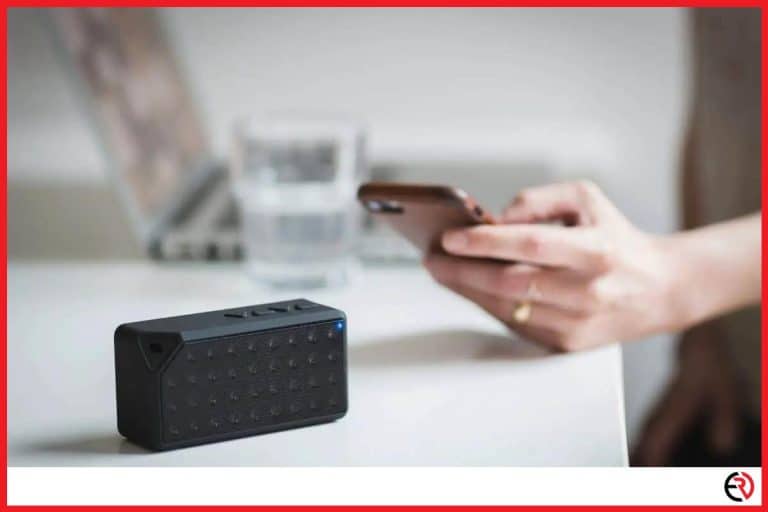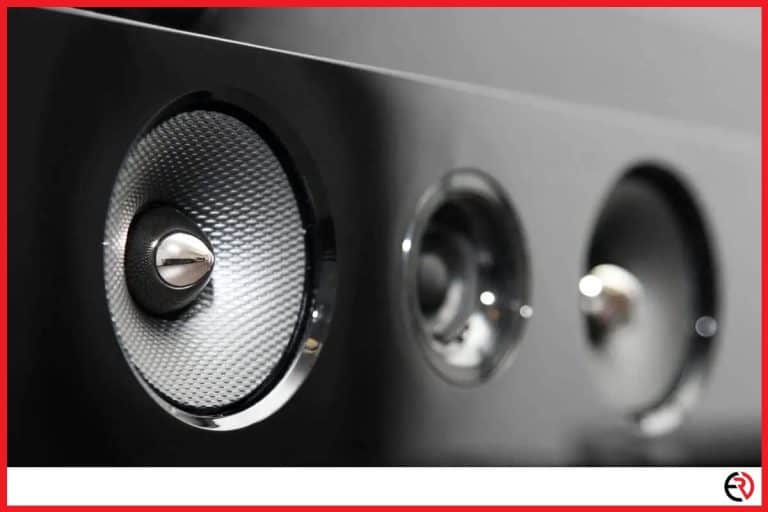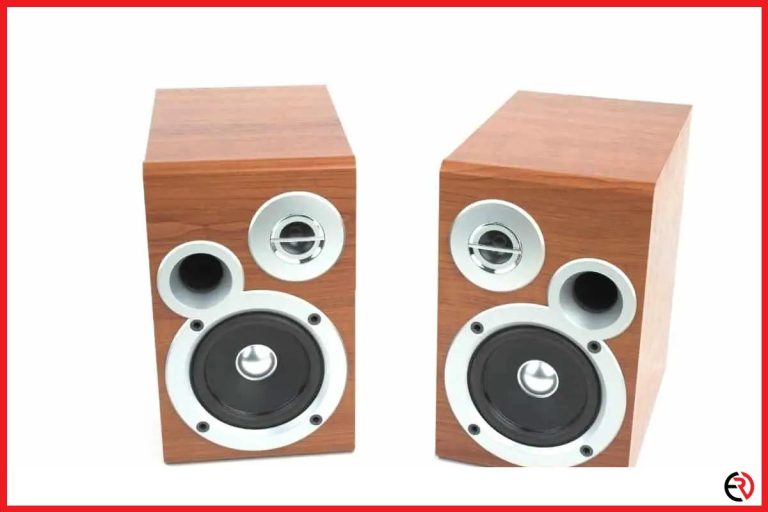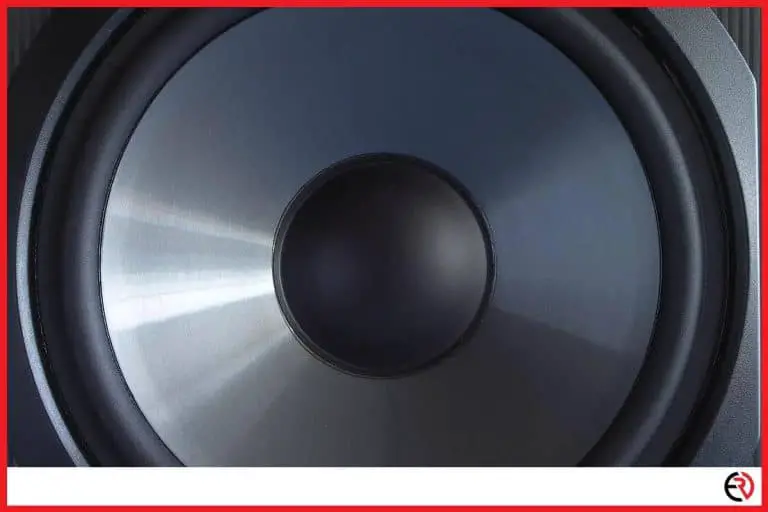Here Is Why Your Subwoofer Makes Popping Noises (Solved)
This post may contain affiliate links which means that, if you choose to make a purchase, I may earn a small commission at no extra cost to you.
Subwoofers are an essential part of a home theater system. I can’t imagine watching movies without the amazing explosions and rumbles created by subwoofers. That’s why I hate it when they start malfunctioning and create popping noises.
A subwoofer can create popping and hissing noises due to many reasons. From dirty signals and underpowered receivers to interference and overheating, the hissing and popping noises may be due to one or more such causes. Fortunately, they can be fixed.
Let’s check out how you can deal with the popping and hissing noises from your subwoofer.
Wireless Interference
With the improving Bluetooth and WiFi standards, wireless subwoofers have become very popular. However, they can suffer from wireless interference. It happens when signals coincide and create distortions or weaken the WiFi signal. There are numerous devices in your home that emit WiFi signals and all of them can add to the interference. Moreover, Bluetooth signals operate at the same frequency range and they can add to the interference as well.
Everything from your phone and laptop to your router, wireless smart devices, and even Bluetooth controllers can cause wireless interference. Interference interrupts the signal from your receiver to your subwoofer and can cause those popping noises. Fortunately, there are many ways to fix this problem.
Fix – The easiest way to figure out if the popping noises are due to wireless interference is to hardwire the subwoofer to your receiver. Here’s how you can hardwire your wireless subwoofer to your receiver:
- Almost all wireless subwoofers have a few connectors at the back for wired connection. Check out the back of the subwoofer for Line-In RCA jacks.
- Your receiver would have RCA connectors for the subwoofer as well and it would be marked as “subwoofer” at the back.
- You can connect these ports via a subwoofer cable or a regular RCA cable with decent sleeving.
If the popping noises were eliminated after hardwiring your subwoofer, then the problem was definitely caused by wireless interference. While wired connections are reliable, wireless connections are more convenient. If you still want to use your wireless subwoofer without the cables, here’s what you can do:
- Move the subwoofer around the room while it’s wirelessly connected to the receiver till the popping noise goes away.
- Turn off WiFi and Bluetooth on phones, laptops, and other devices when you aren’t using them.
- Connect most devices in your home to the 5GHz band of your router so that you can receive the 2.5GHz band for your home theater system and the subwoofer.
- If the popping noise continues even after you’ve taken all the above-mentioned steps, then your subwoofer probably has a damaged WiFi transmitter that needs to be fixed or replaced.
Always-On Setting
Your subwoofer may have an Auto or Always-On setting. Most people, including me, like to enable this setting. It’s very convenient for active subwoofers with in-built amplifiers since the subwoofer is turned on as soon as it receives an audio signal. However, when the auto setting is turned on, the built-in amplifier inside the active subwoofer always gets power.
While most manufacturers consider this issue in their design and build their products with high tolerance, the amp inside the subwoofer can get quite hot when it gets power throughout the day, seven days a week. When the amp gets overheated, it can burn out pretty quickly and also damage the circuitry inside the subwoofer which can cause those popping noises.
Fix – To fix this issue, you can simply turn off the Always-On setting by flicking the switch at the back of your subwoofer. Yes, you need to go the extra mile to turn on the subwoofer every time you want to watch a new movie on your home theater system. However, if it eliminates the popping noises from your subwoofer, it’s worth it.
Dirty signal from the receiver or amp
If your source is bad, the subwoofer just can’t deliver good audio. Sometimes, instead of the subwoofer, the receiver or the amp it plugs into is to blame. If your subwoofer receives a dirty signal from your amp or AV receiver, there are going to be a lot of hisses and pops.
To check if the problem is with the receiver or amp, simply disconnect the subwoofer from the receiver. It doesn’t need to play anything, it just needs to be powered on. If the popping noises are eliminated, the receiver takes the blame.
Fix – This issue can be fixed by changing the source. Changing to a different source and testing your subwoofer lets you figure out if the problem lies with the receiver or the amp inside the subwoofer. Connect the subwoofer to your computer, a different receiver, Bluetooth player, or something else. Now, turn down the volume all the way and play a movie or music.
Slowly turn up the volume dial on the subwoofer till you can clearly listen to the audio. If the popping noise still exists, you need to get the amp inside the subwoofer fixed. If there are no popping noises, then the previously connected receiver was the reason and you need to get it checked and repaired.
On the other hand, if you don’t want to spend money on fixing the receiver or subwoofer amp, you can get a temporary fix for free. Turn down the bass level on the subwoofer and test out the audio. Maintain it at a level that doesn’t create those popping noises. While it’s a temporary fix, it gets the job done for now and gives you time to save money for fixing or replacing the subwoofer or receiver.
Too much power from the receiver
If you have a budget speaker system where your subwoofer draws power from the receiver and powers your speaker you have a bad setup that needs to be immediately changed. While subwoofers have decent built-in amps, they will draw a lot of power from the receiver if they need to power your passive stereo speakers.
As mentioned above, when the subwoofer amp gets overheated, it burns out important components of the circuitry and can cause popping noises. In the worst case, it may even permanently damage the drivers.
Fix – To fix this issue, you need to change your setup. You need to upgrade to a better receiver or external amp that can power the speakers independently and connect to the subwoofers. When the subwoofer doesn’t get overheated, the popping noises should be fixed.
Clipping
Clipping occurs when the capability of a circuit falls short of the volume of the source signal. It ends up squaring the sinusoidal waves and causes clipping. For instance, if my amplifier’s circuit tries to play a signal that is more powerful than what 1 Volt of electricity can produce, the signal gets clipped.
When this signal reaches the subwoofer, the drivers of the subwoofer try to move the cone from the front all the way to the rear within zero seconds. That’s clearly impossible and thus the coil stays in its position without moving. This heats up the coil and causes distortions. In severe cases, it can even tear away the cone.
Fix – To fix clipping issues, you need to power match the amplifier with the subwoofer. Check out the back of the subwoofer and make sure that its RMS rating matches the power output from the amplifier.
If the amp is underpowering or overpowering the subwoofer, it can cause clipping and lead to those popping noises. However, that’s the least of your worries since an overpowered subwoofer would create enough heat from the coils to melt away the glue holding it in place and kill your sub.
Wiring and Connection Issues
Improper connection and damaged wiring can also cause popping noises from the subwoofer. A loose connection causes signal interruption and damaged wires do the same. When the current is interrupted, it causes those annoying popping noises.
Fix – To fix this issue, check whether the RCA cables are securely plugged into the subwoofer and the receiver. You can also check for damaged wires by replacing the cables with some fresh new ones.
Conclusion
While I don’t feel the need for subwoofers for listening to music, they are integral for those exaggerated explosions, rumbles, thumps, and other low-frequency sound effects in movies. I hope the above-mentioned fixes help you to eliminate popping noises from your subwoofer while you get the most out of your movie-watching experience at home.







